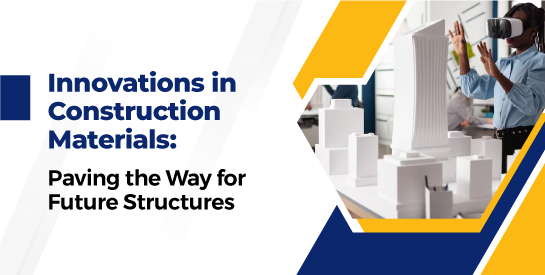Technology is certainly revolutionizing every industry and company in today’s modern world. This includes the construction industry, where upgraded and updated technology is utilized. These innovations in technology grow and benefit in various ways that today’s engineers and architects need to follow. The best colleges for civil engineering in Coimbatore need to ensure that students are aware of how construction materials have evolved, their contribution and how they reshape the future. Let’s discuss this concept in detail.
Why there is a need to adopt technological innovations in the construction industry?
However, the growth of technology is inevitable and has a great influence on the development of business, leading to transformations in several integral features. This includes:
- Evolution of client requirements: Clients are becoming more discerning, aware of the rapidly evolving markets. They have developed assumptions for more imaginatively custom-fitted items for their homes, worksites and business structures. Client requests are rapidly expanding, causing the construction field to reshape and respond to these requirements.
- Benefits of technology in risk management: Technology provides opportunities for business development with innovations like sensors, equipment, and software that are considerably more cost-effective to utilize. This also benefits and expands the productivity of the construction process.
- Growth of startups: The emergence of new market potential creates opportunities that can be activated with the tech patterns. New businesses are progressively conveying chances and making their tasks easier for many companies.
- Legal systems: Digitalization also opens the door to eliminating the natural effect of development projects. It enforces strict regulations on CO2 and energy efficiency standards in the industry. In buildings and foundations, elevated requirements for data utilization and online security can be found.
However, you can study the brief contribution of technology in the construction field during your four-year program at the top civil engineering colleges in Coimbatore, India.
Construction Material Trends:
Here are some emerging innovative construction materials.
- Self-healing concrete: It is common to have cracks that require fixing, which may be time-consuming financially expensive. To sort this, self-healing concrete has been developed, where the building life can be restored. The science behind this healing is that water enters the crack, reactivates the bacteria, and it excretes calcite that heals the crack. Thus, this innovation helps save millions invested in maintaining, fixing and restoring roads, buildings, tunnels and bridges.
- Smart bricks: Smart bricks are adaptable, offer significant thermal energy control, and save construction costs. They provide room for insulation, power, and plumbing and are simple to install because of their flexible structure.
- Bamboo concrete: It is certain to use steel-reinforced concrete in the construction materials. However, bamboo is an alternative material used for support. Bamboo in construction gives sustainable solutions when the challenges of this technique are properly addressed. It means the bamboo has the natural tendency to swell in water and rot, a highly adaptable material with a solid structural framework is created by extracting the plant fibers and combining them with natural substances.
- Pollution absorbing bricks: In today’s times, with an increase in population and pollution, the construction industry faces critical challenges that push for sustainability. Bricks that absorb pollution purify and supply fresh air to buildings’ interiors. These bricks are concrete blocks that are transparent and have sides to direct airflow into a system. In comparison to mechanical filtration methods, these bricks are inexpensive.
- Power-generating glass: Although solar and wind power systems have been in use for a long time, it is now possible to convert windows into solar panels. A power-generating glass emerged as a result of this. Although it looks like conventional glass, it can reflect invisible light waves and transform them into energy. This glass lowers electricity expenses, reduces pollutants, and improves the aesthetics of a building.
- Transparent wood: It is one of the revolutionary construction materials considered a great alternative to plastic and glass. In the treatment procedure, the substance known as lignin is switched out for polymers which render the wood transparent. Transparent wood has several advantageous characteristics, including a low density compared to glass, low thermal conductivity, and great optical transmittance. The transmission of light minimizes power usage by reducing the requirement for artificial lighting.
Conclusion:
Utilizing feasible structure materials isn’t just great for the global; it can reduce development costs, further improve primary energy productivity, and increment property estimation. With a drop in functional expenses, in general, development costs are decreased by 5 to 15 percent, depending on the green material used. There are operational factors in some locations that make a practical framework look better. Today’s top college in Coimbatore provides insights into how today’s evolution in construction materials is feasible and eco-friendly compared to traditional methods.


